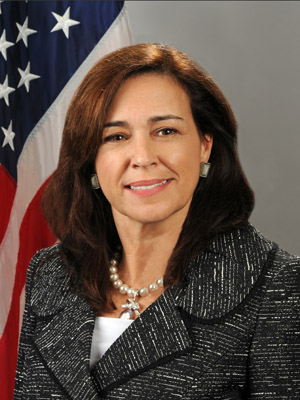
Tara D Sonenshine: Like to see more American students in India
US undersecretary of state for public diplomacy and public affairs wants to take bilateral ties beyond government corridors
Tara D Sonenshine is the undersecretary of state for public diplomacy and public affairs at the US Department of State. In an interview with Forbes India, Sonenshine discusses initiatives to promote public diplomacy with India and how the Indian diaspora in the US is an important voice in this process.
Q: Which aspects of public diplomacy with India are most influenced by the Indian diaspora?
A. The areas that I work most closely on are the people-to-people ties that bind the US and India. Areas of education, exchange and business – all the ties between individuals beyond the official government-to-government [communication channel].
Q: What are you hearing from the Indian diaspora that goes into shaping your communication?
A. There are many ways that we hear from India through its communities. There are over 104,000 Indian students studying in the US each year. There are over 14,000 alumni of our public diplomacy programmes each year and there are more than three million Indian-Americans living in the US. That anchors our relationship and gives us a vibrant exchange of views. We get to hear from the business community, the student community, the women community, the cultural community and, very importantly, more and more the science and technology community. I spend most of my time on the higher education issues. In addition to seeing 104,000 students in the US, I’d like to see more American students in India.
Q: What are you doing to make this happen?
A. There are very concrete things we are doing. One is the Passport to India [initiative] and it’s going to increase the number of American students in India from 3,384 now to about 15,000 in five years. That has got to be done by promoting study abroad, internships, talking about service learning, and engaging the private sector to sponsor American students who might want to intern in an India-based facility. So we are going to use our public-private convening power. And we are working with companies to create these service learning opportunities.
Q: How are you harnessing your department’s convening power to promote economic development in the US and India and how is this a win-win situation for both countries?
A. We live in a global economic community. My community is no longer just defined by my individual town or village. I am part and parcel of an inter-connected web of communities where goods and ideas flow the way people [move]. People think everything is bad in economies everywhere. Bilateral trade between US and India is up 40 per cent since we started this strategic dialogue three years ago and is on track to exceed $100 billion this year. We want agreement and cooperation to scale up on both sides. Both sides get something out of it, particularly in science and technology.
Q: Could you comment on the convergence of interests between the US and India?
A. I think when we look broadly at the strategic mutual interests, from shared democratic values to economic imperatives to global diplomatic priorities, what we see are two countries forging a mutual phase of common understanding.
Q: Public diplomacy being a parallel channel to official communication, what areas are of particular interest?
A. We would encourage science-to-science diplomacy. Health-to-health professionals. Something like cancer knows no geography; it knows no difference between gender, culture or religion. But human beings will decide how we prevent disease and how we resolve it. So, at the end of the day, that exchange of knowledge, expertise and humanity will enable both people to rise.















